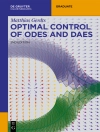Doctoral Thesis / Dissertation from the year 2011 in the subject Physics – Biophysics, grade: 1, 0, TU Dortmund, language: English, abstract: Conformational properties of the full-length human and rat islet amyloid polypeptide (amyloidogenic h IAPP and non-amyloidogenic r IAPP, respectively) were studied at physiological temperatures by MD simulations both for the cysteine and cystine moieties. By means of a temperature scan, it was found that 310K and 330K delimit the temperature at which the water percolation transition occurs, where the biological activity is highest, and were therefore chosen for observing the conformational properties of IAPP. At all temperatures studied, IAPP does not adopt a well-defined conformation and is essentially random-coil in solution, although transient helices appear forming along the peptide between residues 8 and 22, particularly in the reduced form. Above the water percolation transition, the reduced h IAPP moiety presents a considerably diminished helical content remaining unstructured, while the natural cystine moiety reaches a rather compact state, presenting a radius of gyration that is almost 10% smaller than what was measured for the other variants, and characterized by intrapeptide H-bonds that form many β-bridges in the C-terminal region. This compact conformation presents a short end-to-end distance and seems to form through the formation of β -sheet conformations in the C-terminal region with a minimization of the Tyr/Phe distances in a two-step mechanism. The non-aggregating r IAPP also presents transient helical conformations, with a particularly stable helix located in proximity of the C-terminal region, starting from residues L27 and P28. These MD simulations show that P28 in r IAPP influences the secondary structure of IAPP by stabilizing the peptide in helical conformations. When this helix is not present, the peptide presents bends or H-bonded turns at P28 that seem to inhibit the formation of the β-bridges seen in h IAPP. Conversely, h IAPP is highly disordered in the C-terminal region, presenting transient isolated β-strand conformations, particularly at higher temperatures and when the natural disulfide bond is present. Such conformational differences found in these simulations could be responsible for the different aggregational propensities of the two different homologues. The increased helicity in r IAPP induced by the serine-to-proline variation at residue 28 seems to be a plausible inhibitor of its aggregation. The specific position of P28 could be more relevant for inhibiting the aggregation than the intrinsic properties of proline alone.
Maximilian Andrews
Molecular Dynamics of Monomeric IAPP in Solution [PDF ebook]
Molecular Dynamics of Monomeric IAPP in Solution [PDF ebook]
Köp den här e-boken och få 1 till GRATIS!
Språk Engelska ● Formatera PDF ● ISBN 9783656223047 ● Filstorlek 15.5 MB ● Utgivare GRIN Verlag ● Stad München ● Land DE ● Publicerad 2012 ● Utgåva 1 ● Nedladdningsbara 24 månader ● Valuta EUR ● ID 3729966 ● Kopieringsskydd utan












